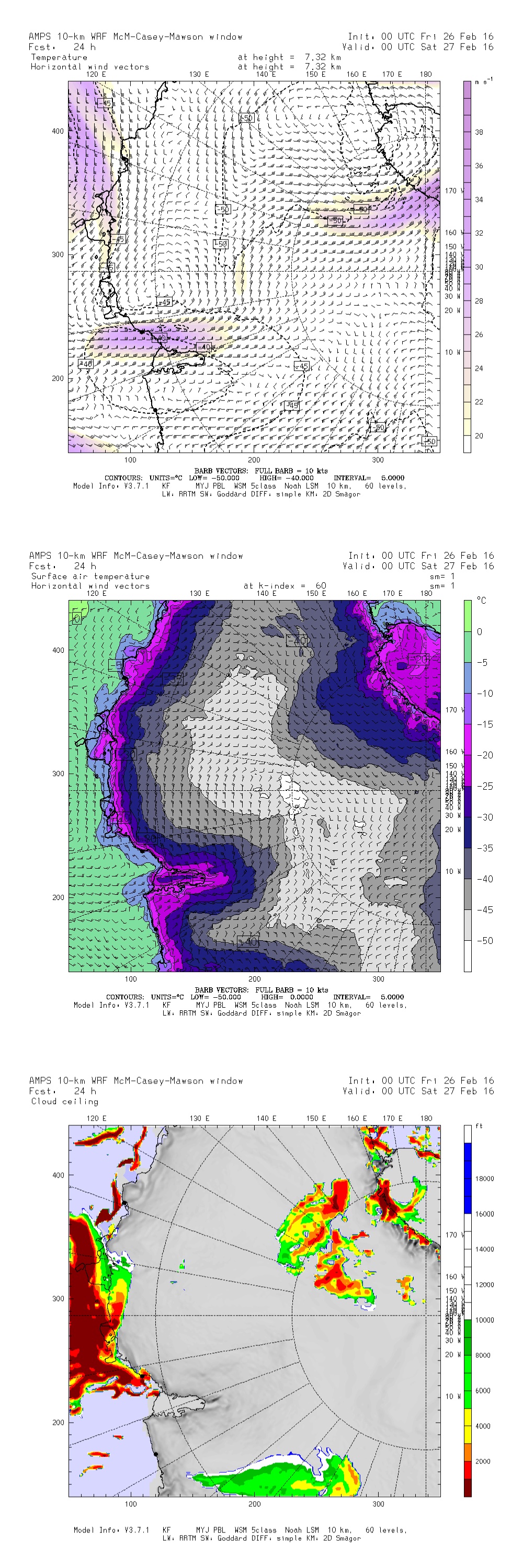NCAR weather modeling system aids Antarctic rescue effort
Specialized forecast product provides flight-level wind information for rescue plane
Feb 26, 2016 - by Staff
Feb 26, 2016 - by Staff

Forecast products generated by AMPS for an Antarctic rescue mission. From top: flight-level winds, surface temperature, and cloud base heights. Click to enlarge. Images courtesy of Jordan Powers, NCAR.
As the U.S. Antarctic Program began mobilizing a specially equipped ski plane this week to rescue a stranded group of researchers, they asked for some key help from the National Center for Atmospheric Research. They needed a good forecast.
"Antarctica has some really bad weather. Every day is different, but often not in a good way," said NCAR scientist Jordan Powers. "We provide model weather guidance to the U.S. Antarctic Program on an ongoing basis. And when these emergencies come up, they often ask us for specialized forecast products, too."
This time, the emergency is related to a group of more than 30 people who are stranded at an Australian research station. The group was originally scheduled to return home on the Aurora Australis icebreaker. But the ship broke free of its moorings during a blizzard on Tuesday night (U.S. time) and ran aground.
The U.S. Antarctic Program plans to send a ski-equipped LC-130 aircraft to pick up the group and fly them to Australia's Casey research station, where they can catch another flight home.
To ensure the safety of the rescue flight, the U.S. Antarctic Program asked NCAR to provide information on expected winds at 18,000 and 24,000 feet—the altitude where the LC-130 is expected to fly.
The forecast model system created by NCAR and used in Antarctica is called the Antarctic Mesoscale Prediction System (AMPS). AMPS was zoomed in on the section of the continent where the plane would be flying and is providing the information meteorologists need to make a good regional forecast.
AMPS has been used in Antarctica since September 2000. About every year and a half, NCAR has been called on to help with a rescue, Powers said.
"It's relatively quick to provide the specialized forecast products now because we've been doing these for so long," Powers said.
AMPS is run on Erebus, a supercomputer funded by the National Science Foundation and maintained by NCAR's Computational Information and Systems Lab.
Writer/contact:
Laura Snider, Senior Science Writer and Public Information Officer